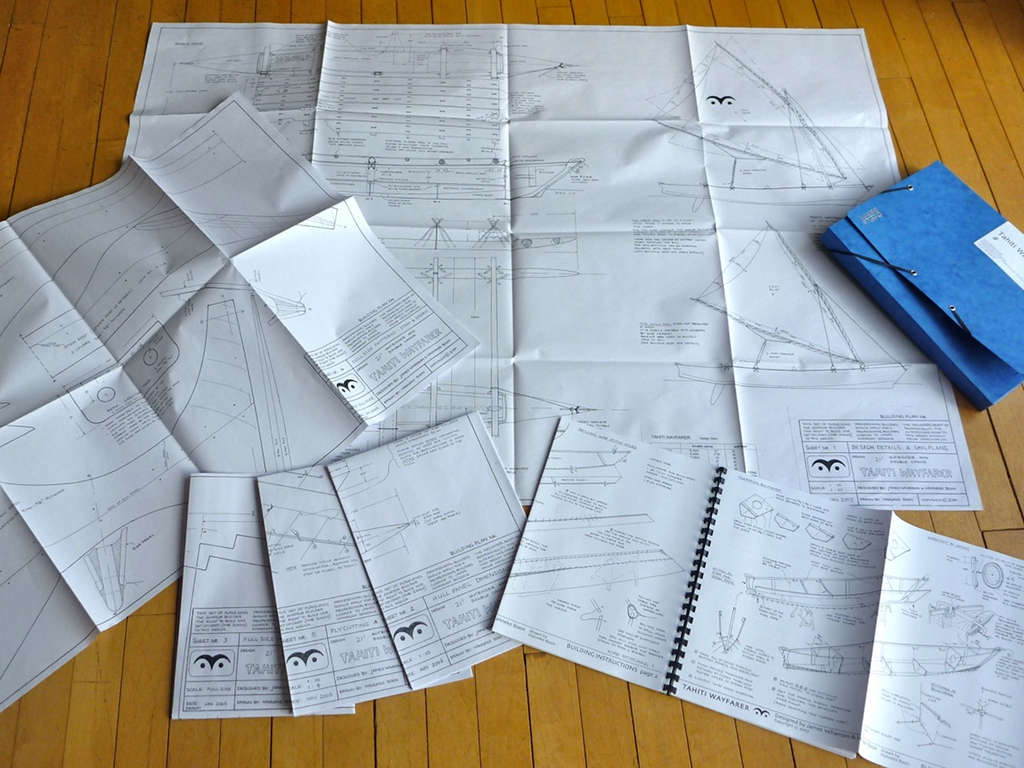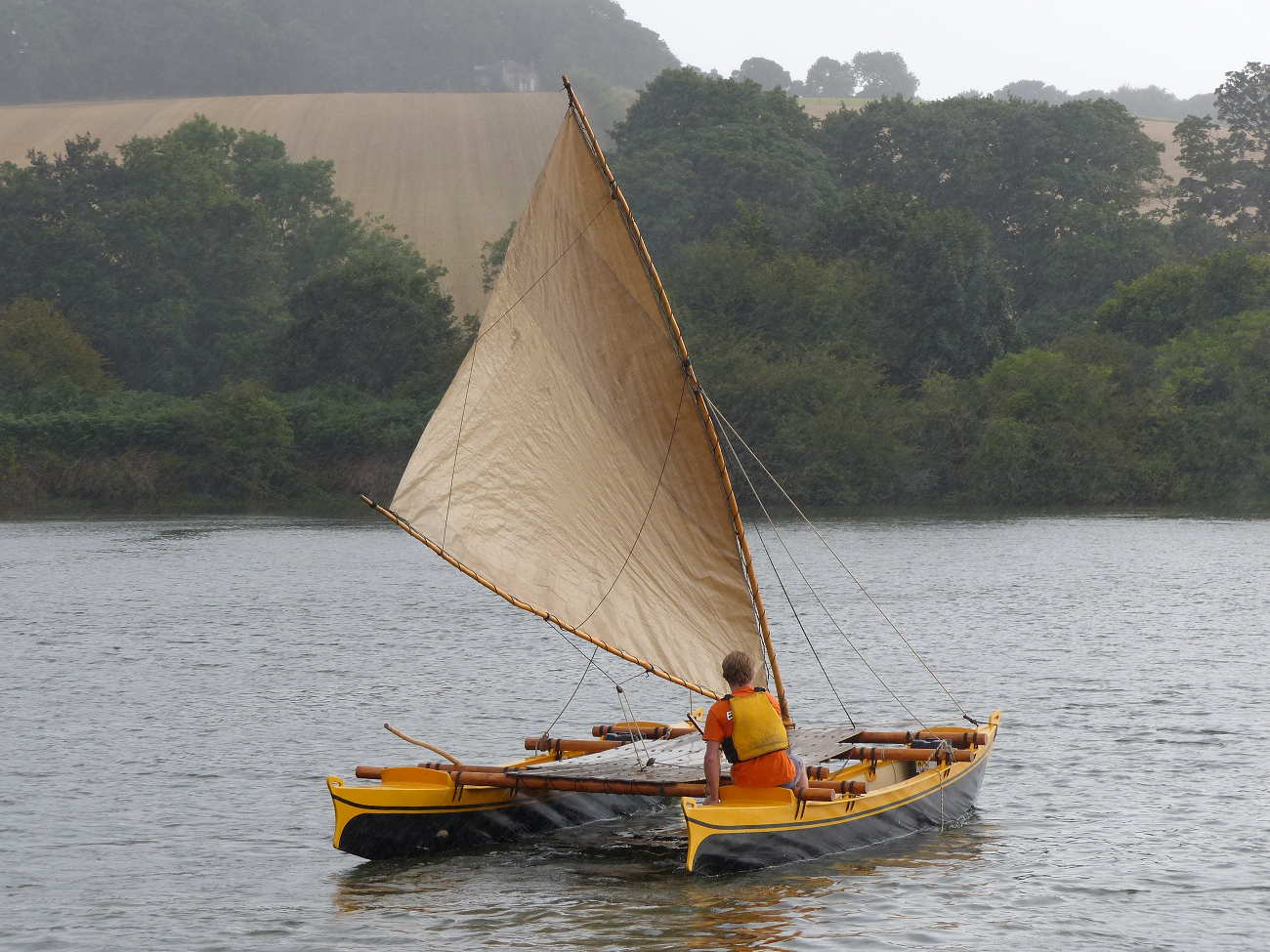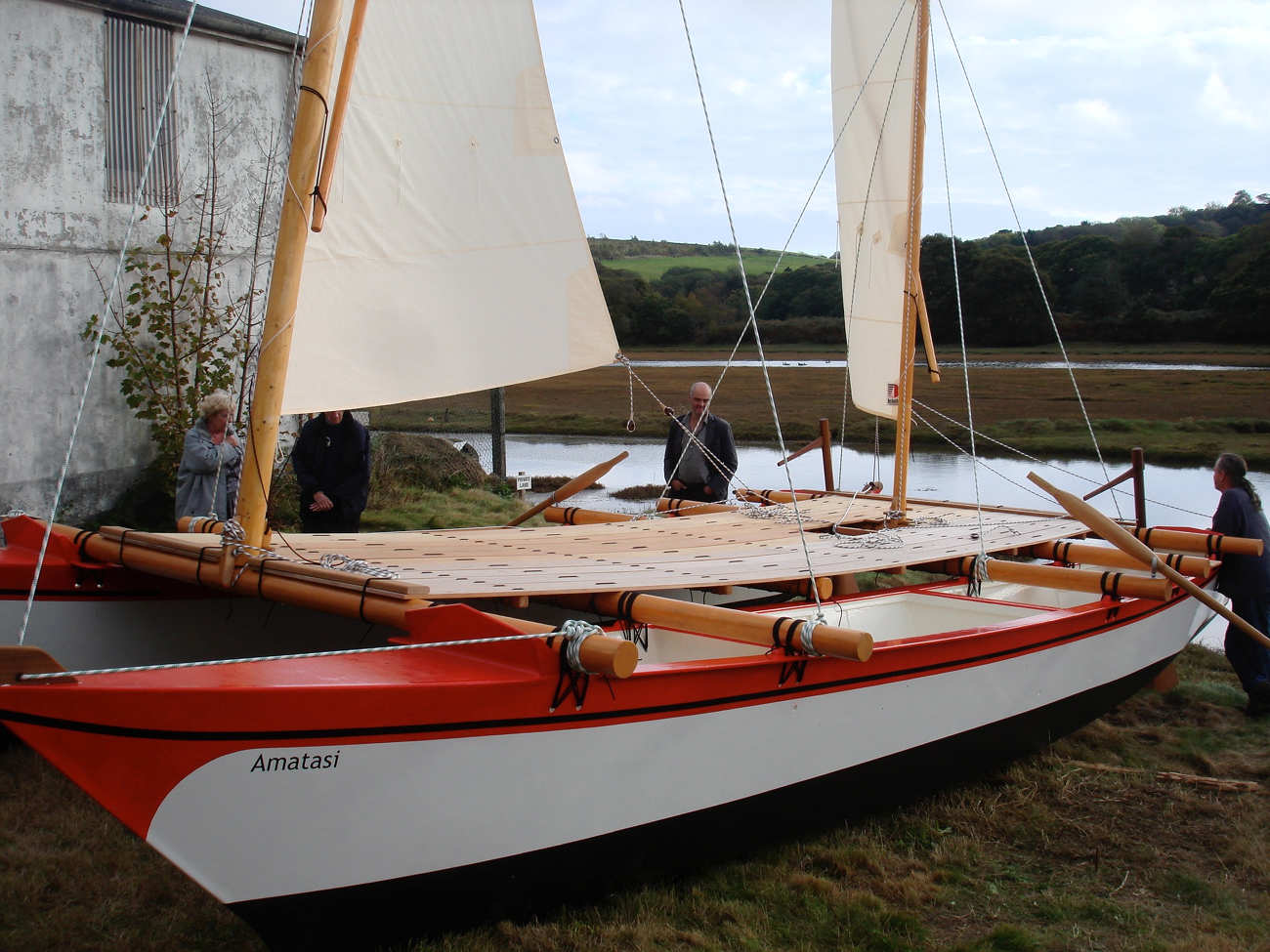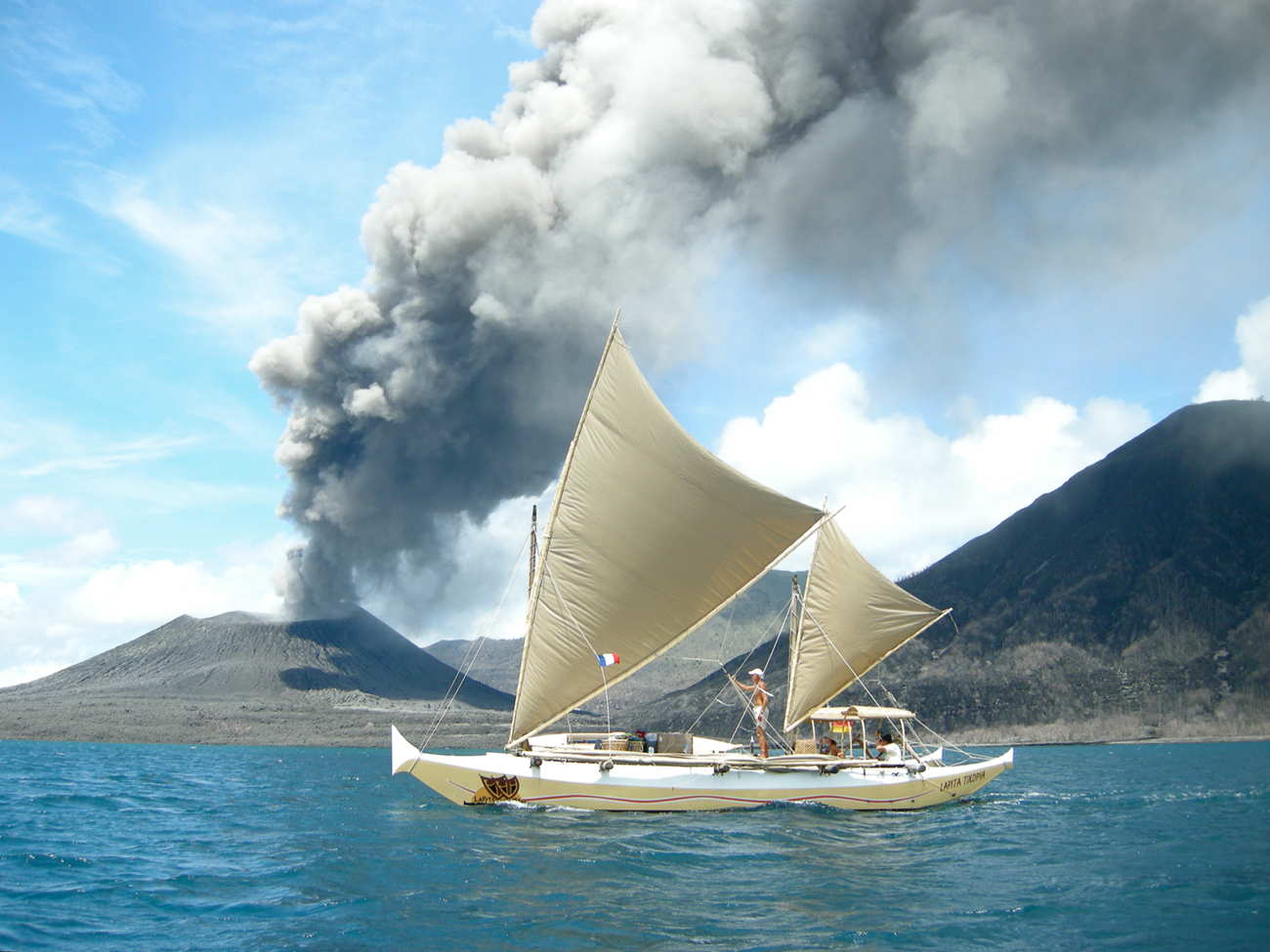Melanesia
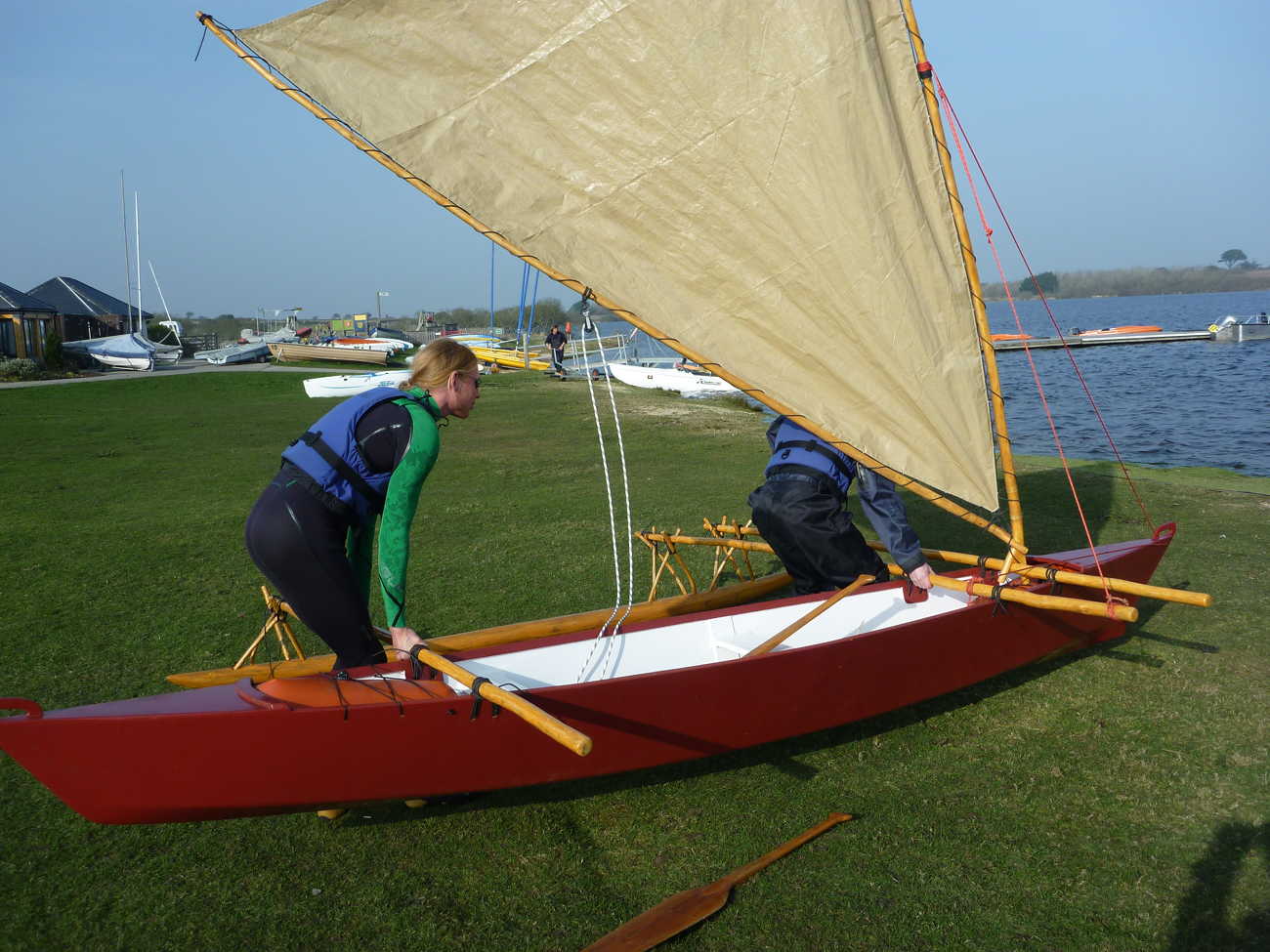
| Building Method: | Ply/Glass/Epoxy Stitch & Glue | |
|---|---|---|
| Length Overall: | 16' | 4.90 m |
| Length of Float: | 12' | 3.65 m |
| Weight of Hull: | 46 lbs | 21 kg |
| Overall Weight (sailing version): | 110 lbs | 50 kg |
| Overall Weight (paddling version): | 75 lbs | 34 kg |
| Sail area: | 58 sqft | 5.35 sqm |
| Building Time Estimate: | 115 hrs | |
The Melanesians have been building outrigger canoes for thousands of years. The 16ft Wharram MELANESIA design is a very simple and economical to build outrigger canoe, based on the original Pacific canoes. It was designed in 1997 for a small island in Vanuatu where trees for the native dugout canoes were getting scarce.
The main canoe hull is built from just two sheets of plywood, stitched and glued together with epoxy and glass tape. All other parts are constructed from naturally grown saplings/timber. She is steered with a steering paddle and uses a traditional hand made 'crabclaw' sail.
The paddling version uses a more curved laminated float and two shorter laminated crossbeams.
The plans contain drawings for both sailing and paddling versions.
Study Plans are not available for this design.

